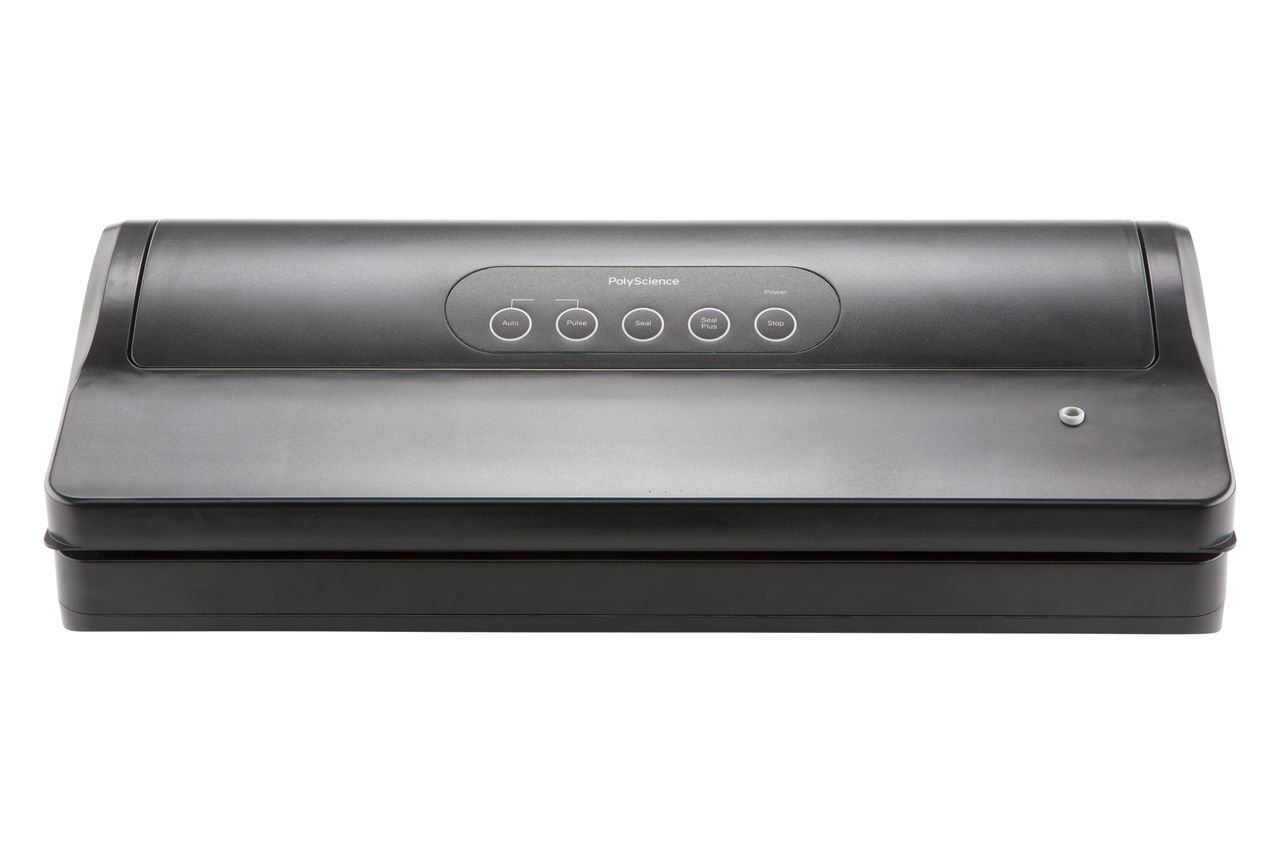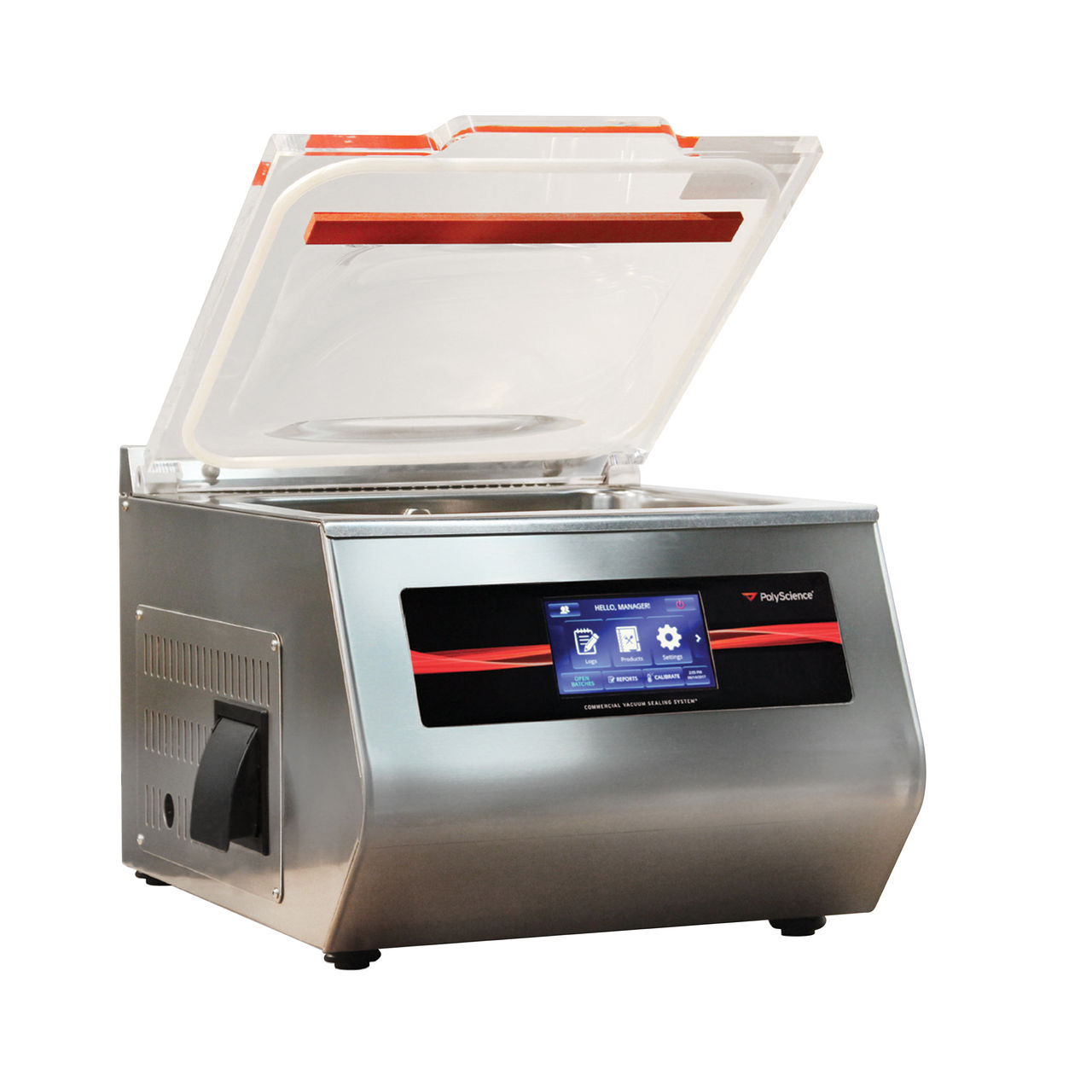If you’re in the market for a vacuum sealer, you may be asking yourself.. Do I really need a chamber sealer? What’s the different between dry pumps and oil pumps? What sort of vacuum bags do I need? What features are important? We’ll break it all down for you here..
Edge Sealers v.s. Chamber Sealers
Vacuum sealers fall into two main categories - edge sealers and chamber sealers. Edge sealers can be a great choice for beginners who want to vacuum seal at home. They are simple to use and more affordable than a chamber sealer. Be aware however, that while the upfront cost is significantly less than a chamber vacuum sealer, these units require special bags with air channels that are more expensive than chamber bags. It is not is not possible to use chamber vacuum bags with an edge sealer. The air channels serve to allow the sealer to pull air out around the bag, essentially “squeezing” the air out. The challenge is that this action squeezes out liquids in the bag as well as any surface moisture on your food. This can make for a poor seal. The best practice to avoid this is to use a bag that is longer than you think you need to give the moisture some extra room and ensure a good seal. The PolyScience 150 Series features a pulse function that enables you to pull a good vacuum and stop the cycle before the liquid reaches the seal.
Chamber sealers come in many shapes and sizes, fit all sorts of use cases, and are priced across a wide range of price points. When considering a chamber vacuum sealer it is most important to choose the pump type that is right for you. Chamber vacuum sealers with a dry piston pump are an excellent choice for the weekend warrior. If you’re vacuum sealing moist foods and liquids with some frequency, but aren’t ready for the regular maintenance tasks involved with owning an oil pump, this is the unit that’s right for you. If you’re a professional or find yourself sealing multiple packages back to back (sausage makers, hunters, bulk buyers), then an oil-based system is right for you. An oil pump offers faster vacuum cycles (getting the job done almost 50% faster), quieter operation, enhanced vacuum capabilities (soft air return, infusion, extraction, marination), and greater longevity of the appliance with routine maintenance.
Vacuum Sealer Maintenance
This is where edge sealers and dry pump chambers really shine. They require almost no regular maintenance except a surface level cleaning after use. Occasionally you may wear out a gasket or burn through your seal bar tape. With PolyScience dry pump vacuum sealers these consumables are easily replaced without the need for tools. Simply swap the new part for the old part and you’re good to go.
Oil pumps require regular oil changes to flush out any contaminants that may have been sucked into the pump while vacuuming. This will also remove the moisture that has accumulated in the pump over time. You can see our video on this process HERE. As the pressure in the vacuum chamber falls, so does the boiling point of any liquids in the chamber, even surface moisture. You can see our video on this HERE. This moisture will evaporate and re-condense in your pump. Since oil floats on water, the moisture will collect in the bottom of the pump and eventually corrode it. The MX2 vacuum infusion chamber features a unique pump that has been internally coated to resist corrosion. It also has an auto-sensing oil health system that will prompt the user to run a regular cleansing cycle and alert them when an oil change is necessary. This will evaporate off the moisture in the pump, greatly extending the life of the oil. If your unit does not have this feature, we recommend changing the oil on a monthly basis and the oil filter every 6 months. Oil pumps usually have a sight glass that allow you to see the condition of the oil. Whenever it looks murky or cloudy, be sure to change it. The number one failure of oil pump vacuum sealers is due to insufficient oil maintenance.
The seal bar of a chamber vacuum sealer is comprised of a number of consumables including seal wire, possibly trimming wire, and heat resistant teflon tape. It is necessary to replace the wire when it has become dark or discolored or seal performance declines. If your seal bar timing is set too high you can burn through the tape. The wires and tape will wear over time with use and should be replaced as necessary. To replace the wire on the PolyScience 400 Series, simply cut a length of wire, remove the old teflon tape, loosen the hex nuts holding the old wire in place and replace it with the new wire. Put new teflon tape over the wires when you’re done. If one of your wires is worn, but the other is not, it’s best practice to replace both. This will save on teflon tape in the long run, but also ensure consistent performance of the seal bar. The MX2 features a “plug & play” seal bar. Remove the old bar by lifting it out and dropping in a new one. The MX2 also uses a unique “curing” method to seal the bags rather than extended heating of the seal wires, nearly doubling their life span.
Special Features
While many vacuum sealers operate in much the same way, some units have special features that enhance their performance, reliability, and usability. Consider your needs and usage. Some special features may benefit you.
The 150 Series External Vacuum Sealing System
This is the perfect unit for entry into vacuum sealing. Its lightweight and compact design enable it to be easily stored away when not in use. It features one-touch operation and zero regular maintenance.

• Convenient one-touch automatic vacuum sealing
• Instant seal function for working with delicate items
• Seal Plus™ feature ensures air tight seal every time
• Vacuum pulse option allows you to apply just the right amount of vacuum when dealing with moist foods
• External vacuum port for vacuum canisters
• Low profile design for convenient handling and storage
• Maintenance free operation
The 300 Series Chamber Vacuum Sealer
This unit is a great fit for frequent vacuum sealing. Whether you’re bulk buying, hunting and fishing, or sealing liquids, this unit can do it all. It features presets and simple maintenance.

• Excels at vacuum sealing both dry foods and liquids such as soups, stews, stocks and purees
• Three preset buttons can be programmed to provide the exact vacuum time for meats, fish and vegetables
• A built-in marinate cycle broadens accelerates flavor development and tenderness
• Stainless steel housing ensures durability
• External vacuum port lets you vacuum seal both bags and canisters
• The large chamber accommodates expanded pouch sizes
The MX2 Vacuum Infusion Chamber
In our opinion, this unit is the best bang for your buck on the market. It comes preset for a number of vacuum techniques which enhance its usability as a food and beverage preparation tool, not just a vacuum sealer. The standard features like soft air return, integrated liquid tray, enhanced programming and more are features that are typically add-ons a la carte in vacuum sealers that are double the price.

• Multiple pressure and humidity sensors - function in conjunction with algorithmic control to execute infusion and marination techniques.
• Preset vacuum sealing functions for storage, liquid infusion, solid compression, sous vide packaging and marination
• Up to 24 user-created presets
• Smallest & deepest machine on the market (7 inch depth for using commercial fourth pans)
• Commercially rated oil pump coated to resist corrosion, UL approved.
• Auto oil cleaning function with cleanliness sensing
• Lid has no wearable parts
• Lid tension pivot system allows the lid to stay open and close softly. Single screw removal
• Disposable sear bar for easy maintenance
• Convex seal wire that actively pushes liquids out of the way, ensuring a proper seal
• Standard liquid tray / flat deck system accommodated liquid rich bags and solid foods
• Full color touch screen
The 400 Series Chamber Vacuum Sealer
This product marks a breakthrough in vacuum sealing and sous vide HACCP support. This unit provides direct logging by the user at a Critical Control Point. It comes with everything you need to write your HACCP plan right in the box.

• HACCP data logging of sous vide cooks and vacuum processing
• Direct temperature logging of Sous Vide cooking cycles is supported via dual K-Type thermocouple probe ports.
• Access to HACCP Portal allows you to prepare HACCP plans for vacuum sealing, sous vide cooking, and other Reduced Oxygen Packaging processes with ease.
• Manager and Operator passcodes assist in control over log data and functionality. Programmable for specific vacuum levels across a wide range of foods
• Dual pressure sensors allow true millibar reading for extreme repeatability in vacuum packing
• Dual humidity sensors eliminate boil over
• Comes with a water resistant keyboard and pouch label printer.
• Full color touch screen
Like this post? Make sure to SIGN UP for our newsletter to stay up to date on our latest content and promotions!
